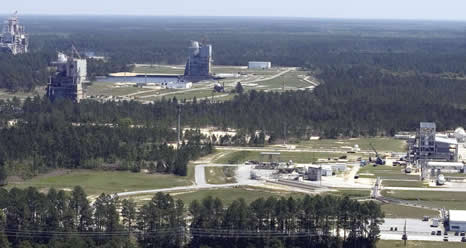
Special to The Mississippi Link
STENNIS SPACE CENTER – Rolls-Royce North America is adding a second jet engine test stand at the NASA John C. Stennis Space Center (SSC) in Hancock County. The project represents a company investment of at least $50 million and will create 35 new jobs.
Currently, Rolls-Royce employs 45 workers at its existing test stand at the Stennis Space Center.
The Mississippi Development Authority (MDA) helped facilitate the project by providing assistance for infrastructure improvements through the Hurricane Katrina Disaster Recovery Community Development Block Grant (CDBG) program, as well as assistance for construction and training activities through the Momentum Mississippi Incentives program. The agency also provided assistance for workforce training.
Additionally, Hancock County is providing assistance for the project.
Headquartered in Reston, Va., Rolls-Royce North America opened its Outdoor Jet Engine Testing Facility at Stennis Space Center in 2007. The site is one of three such sites in the world, and it conducts specialist development engine testing including noise, crosswind, thrust reverse, cyclic and endurance testing on all current Rolls-Royce engine types.
The site known today as NASA’s John C. Stennis Space Center boasts a rich and colorful history dating as far back as 1699. Indians, settlers, pirates and soldiers shaped this part of Mississippi which now hosts modern-day explorers.
In the late 1960s and early 70s, there was an old saying around the community, “If you want to go to the moon, you first have to go through Hancock County, Miss.”
In October 1961, a historic announcement was made: the federal government had selected an area in Hancock County to be the site of a static test facility for launch vehicles to be used in the Apollo manned lunar landing program.
It was the largest construction project in the state of Mississippi and the second largest in the United States at that time.
Less than eight years later, astronauts Neil Armstrong and Buzz Aldrin walked on the lunar surface, safely transported thousands of miles by a space vehicle whose boosters were tested and proven flight-worthy at Stennis Space Center.
The center’s primary mission at the onset was to flight certify all first and second stages of the Saturn V rocket for the Apollo program. This program began with a static test firing on April 23, 1966, and continued into the early 1970s.
Proof of the contributions made by Stennis Space Center to America’s space program was that all the Apollo space vehicle boosters did their job without a single failure, including those for the Apollo 11 mission the landing of the first men on the moon.
A new chapter was added in June 1975 when the Space Shuttle Main Engine was tested here for the first time. All the engines used to boost the Space Shuttle into low-Earth orbit are flight certified at SSC on the same stands used to test fire all first and second stages of the Saturn V in the Apollo and Skylab programs. Space Shuttle Main Engine testing is expected to proceed well into the 21st century.
Over the years, SSC has evolved into a multidisciplinary facility made up of NASA and 30 other resident agencies engaged in space and environmental programs and the national defense, including the U.S. Navy’s world-class oceanographic research community.
SSC has undergone a number of name changes. Its original name, Mississippi Test Operations, was changed to Mississippi Test Facility in 1965. In 1974, the facility was named the National Space Technology Laboratories reporting to NASA Headquarters in Washington, D.C.
In May 1988, it was renamed the John C. Stennis Space Center in honor of U.S. Sen. John C. Stennis for his steadfast leadership and staunch support of the nation’s space program.
The center is located in its own city, Stennis Space Center, Mississippi, with their own zip code.

Be the first to comment